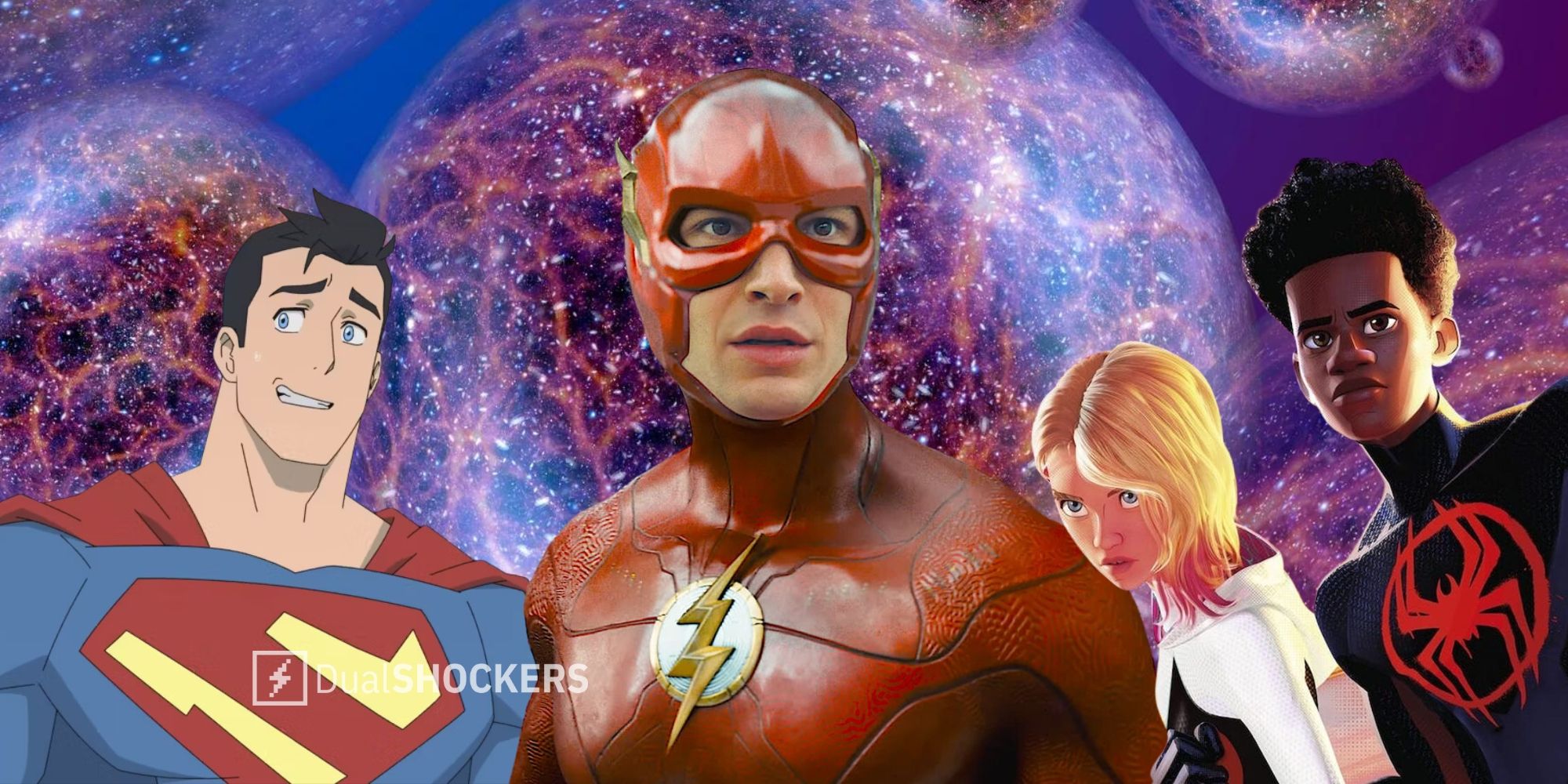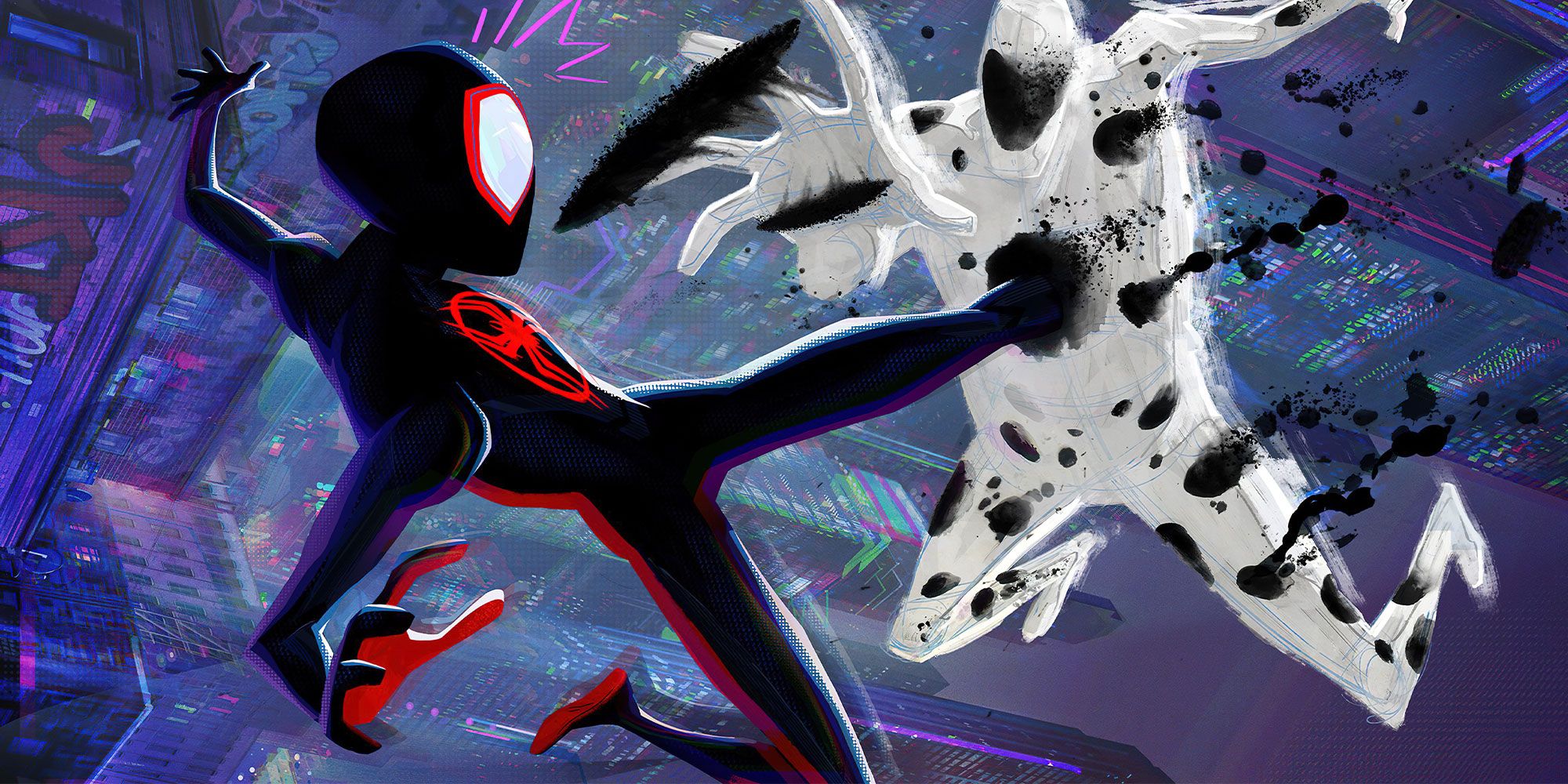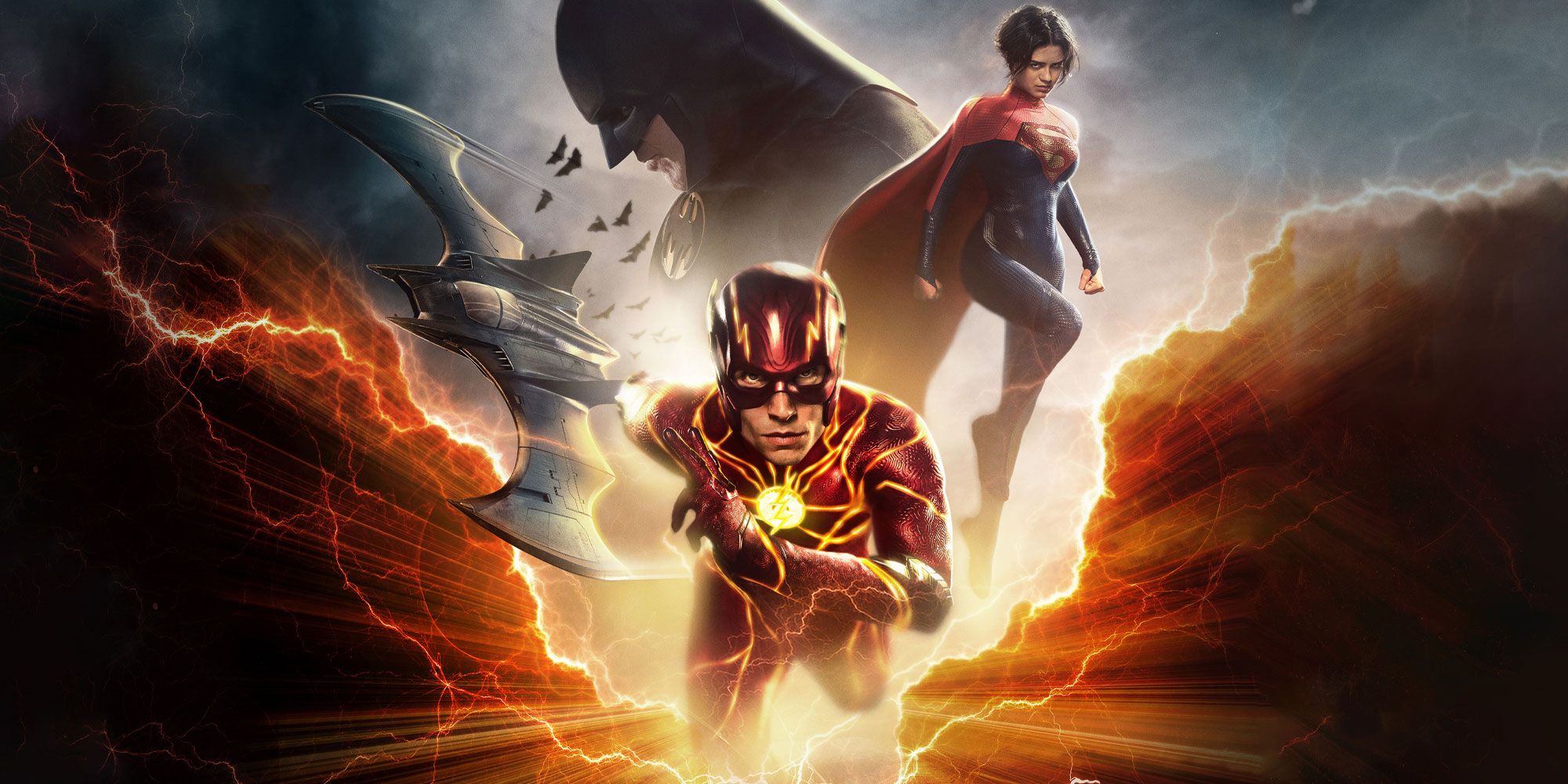Mentioning 'the multiverse' rarely comes without a groan these days. What was once a pretty out-there sci-fi concept has been driven into the ground further than the Mariana Trench, a trope characterized by nostalgia-pandering schlock. It's not enough anymore to have even a cinematic universe, you need a cinematic multiverse—a franchise that calls back to its other iterations and pulls old iconography out from retirement (or, in the case of The Flash, the grave). It's dialing up the insatiable hunger for crossovers up to eleven as eras collide in films like Spider-Man: No Way Home or Multiverse of Madness, something that seems to only be expediting everyone's superhero fatigue.
However, despite all the accusations of nostalgic key-jangling and mindless popcorn action levied at the concept (which isn't without merit, mind you), I just can't bring myself to view the multiverse with disdain. It's a concept that's fueled some of my earliest creative endeavors and has been at the core of some great media. The multiverse offers a well of aesthetic and narrative potential that is begging to be explored.
To the former point, the multiverse presents a unique aesthetic opportunity—a blending of styles. Combining universes and different iterations of the same character naturally lends to mixing styles, with no series doing a better job of showing this off than the two critically beloved Spider-Verse films. Into the Spider-Verse introduced a dozen new Spideys from alternate dimensions, each with their own stylistic quirks that made them feel like they were really from an entirely separate reality. Spider-Noir and Spider-Ham have their own laws of physics (with Noir being affected by wind regardless of where he is and Spider-Ham adhering to cartoon logic) whilst Peni Parker is not only drawn in a unique, anime-inspired style, but in what might be one of my favorite details in any film, her lips are out of sync with her dialogue except for in the Japanese version of the film—as if she's being dubbed over.
The sequel kicked this into high gear—with manifold interpretations of Spideys and their rogue galleries. You've got characters like Hobie Brown, who looks like he jumped out of a Sex Pistols album cover, occupying the same space as neon-accented future vampire Miguel O'Hara. I've always had a thing for this sort of multimedia blend since I became obsessed with Who Framed Roger Rabbit as a kid, and when a multiverse project embraces it, we see the concept really flourish.
When multiverse media fails to make the viewer feel like other characters truly come from an entirely different reality, to sell us on the hype of variants, the missed opportunity is plain to see. Multiverse of Madness barely touched on any dimensional difference outside of reversing traffic light colors, while The Flash didn't make any directorial or effects changes to capture the macabre whimsy of Keaton's Batman. What's the point of mixing in legacy characters and settings if you're only drawing from the source material for cameos and specific iconography?
Mixing design philosophies is one thing, but where the multiverse really shines is in its story potential. Not only does exploration of entirely unique dimensions leave open the possibility for any type of story in any type of genre, but the idea of different iterations of a character or world comes with some great opportunities. I want to highlight the show My Adventures With Superman, a more wholesome take on the Blue Boy Scout that recently had an episode revolving around the multiverse—taking advantage of multiple Lois Lanes and multiple Supermen. The show's Lois finds herself embroiled in a society of other, more jaded Lois Lanes, leading to a case of impostor syndrome that she conquers by the end of the episode by accepting herself and rejecting the standards of this multidimensional society.
Not only this, but she finds archived footage of evil Supermen, which fuels her worry towards the Clark from her own dimension. While I prefer the show embracing the unabashed good of its Superman, this nod to the trope of him going evil is a nice touch to the existing drama. It also serves as a very tasteful way to make some references, with the Supermen shown clearly taking design cues from Justice Lords Superman and Gods & Monsters Superman. It's very blink-and-you'll-miss-it, and the cameos are only there to serve the plot rather than a to derail it, as opposed to The Flash's multiverse scene. There, the cameos (mostly CGI reconstructions of the dead) are not only disrespectful, especially in the case of George Reeves, but sideline the plot to serve as a gallery of cameos floating about in these weird Chupa Chup spheres. The context of these characters only means something to the audience members that already know them, whereas the cameos in My Adventures With Superman are much more for the characters themselves.
For all all the mediocre movies and pandering derived from the idea, I can't find myself chalking the multiverse up as another cash-grab stock concept. I've always been interested in the idea, and the media that best takes advantage of it do so in exactly the ways that I've always yearned to see.



